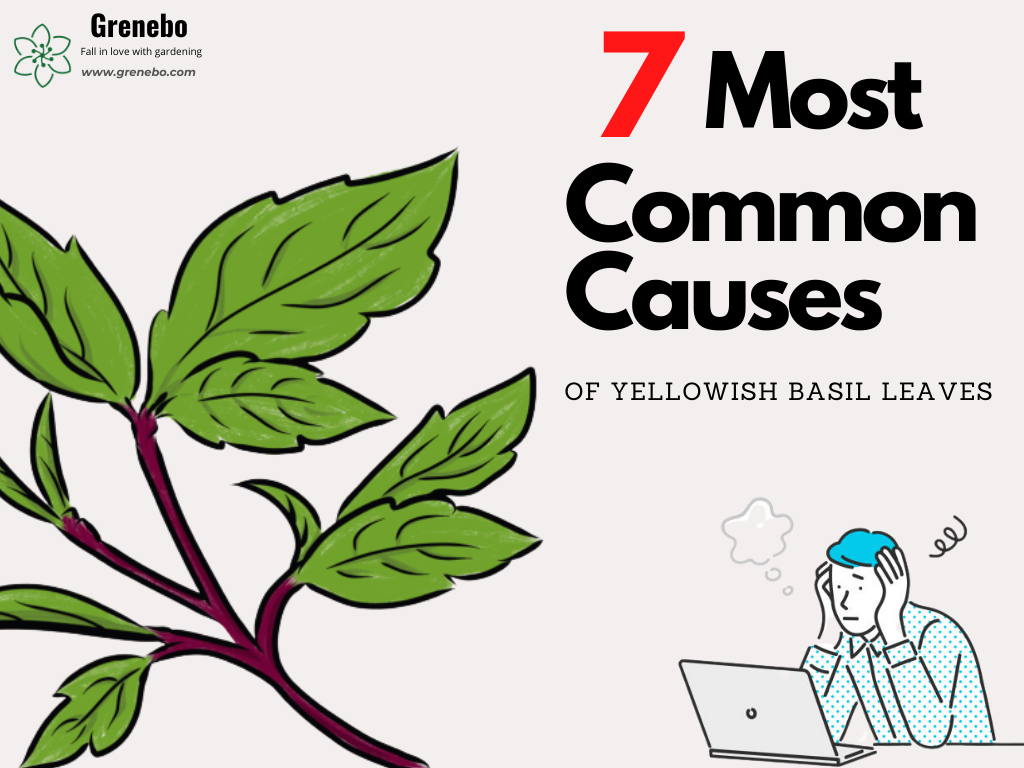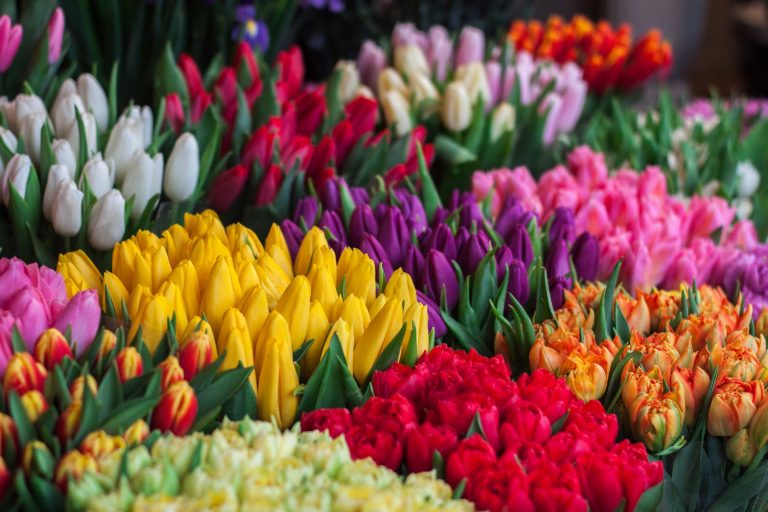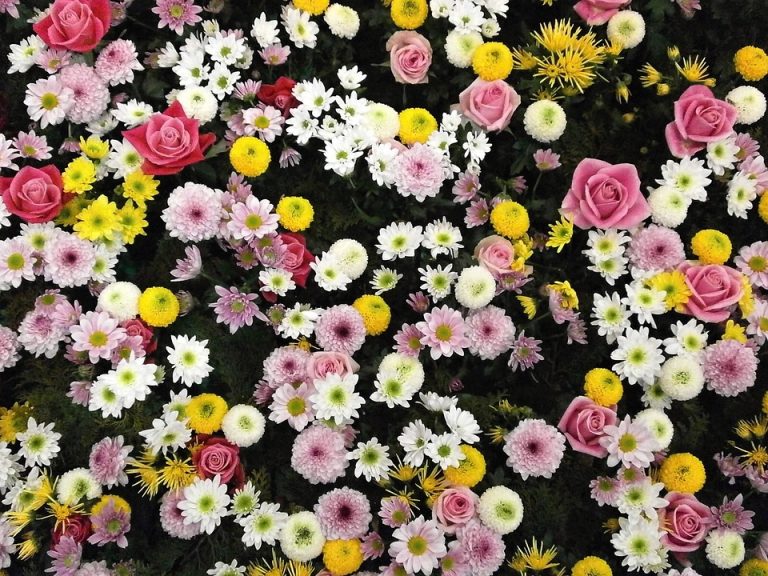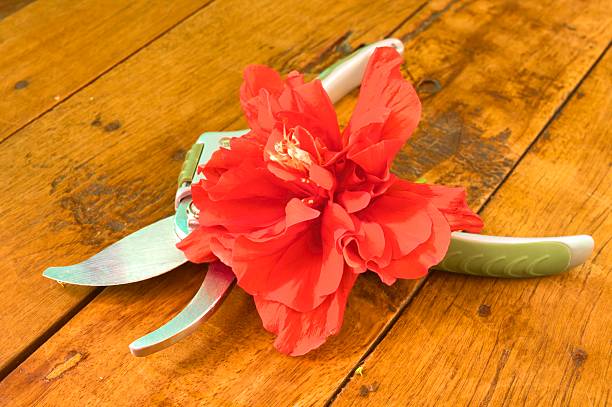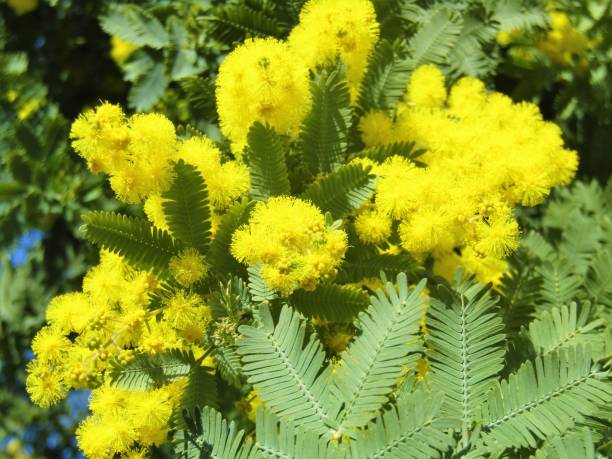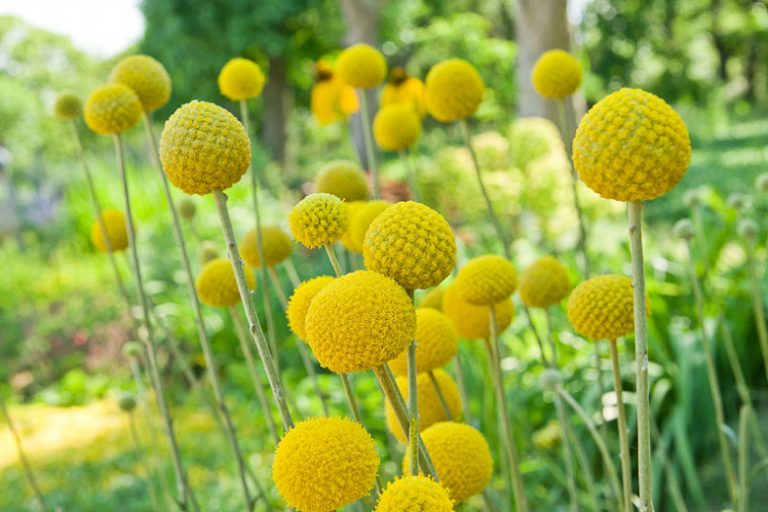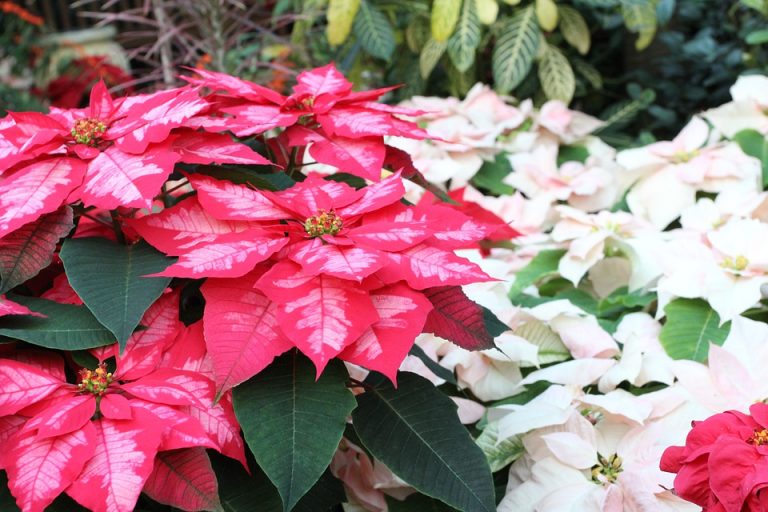Yellowing Leaves on Basil – 7 Causes You Should Know
Basil is one of those plants that looks just like it sounds: bushy with oodles of leaves, making it a must-have for any kitchen garden. A member of the mint family, basil is a fragrant herb with a bright and peppery flavor. It’s the go-to herb for cooking something that could use some pep—a little goes a long way when it comes to this flavorful plant.
Basil is native to India, the Middle East, and Africa, and has been cultivated for thousands of years. It comes in over 150 varieties, but you can expect most to be green (although there are purple basil, lemon basil, and other varieties). The most commonly used type is sweet basil, which has a floral aroma and tastes slightly peppery. If you’ve ever had an Italian dish with pesto or put fresh leaves on top of pizza or pasta, chances are you’ve tasted sweet basil! But like any other plant, this herb is also susceptible to diseases. In most cases, the yellowing of leaves.
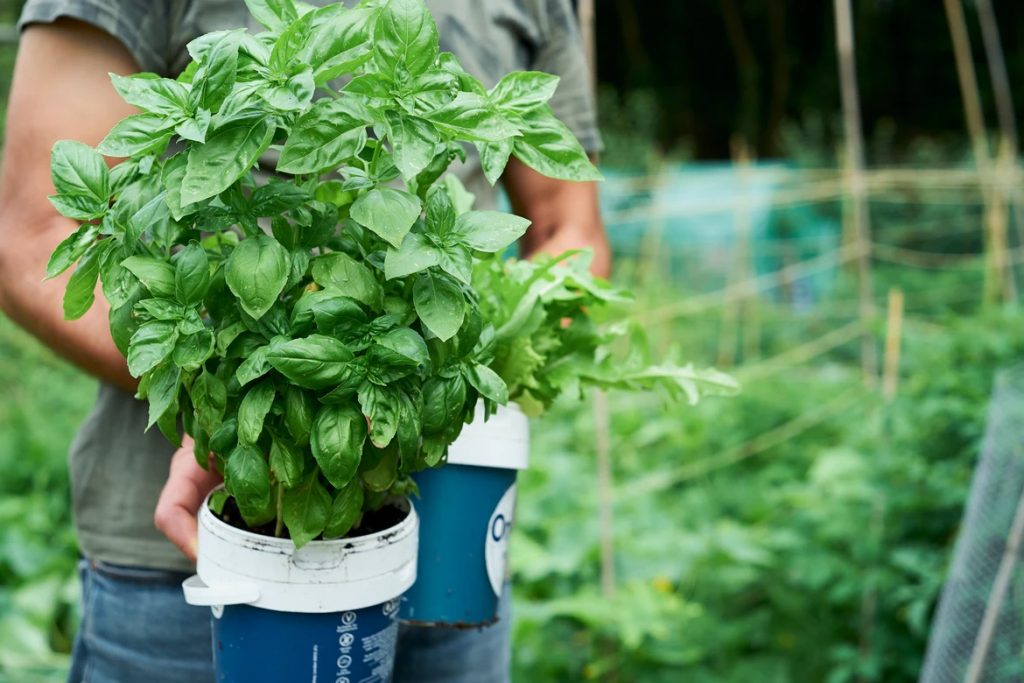
Basil is a relatively hardy herb that grows well in most climates as long as they aren’t too cold or hot. While basil requires plenty of sunlight to thrive, too much sun can cause the leaves to develop brown spots and turn yellow. A good rule of thumb is to plant basil six to eight inches away from other plants and make sure it receives at least six hours of direct sunlight daily.
Yellowing of leaves is a common problem in most plants, especially basil. They can be caused by many different things and sometimes it can be challenging to figure out the exact cause. The type of basil you grow will also play a role in determining how the leaves turn yellow. For example, if you grow African blue basil, you can expect some yellowing of the leaves as the plant ages. Even though some types of basil are more likely to develop yellow leaves than others, there are steps you can take to prevent or minimize the problem.
In this article, we’ll discuss the most common reason why basil leaves turn yellowish and how to treat them.
7 Most Common Causes of Yellowish Basil Leaves
1.Excess Water
It’s not uncommon for the leaves of a basil plant to turn yellow and fall off. In most cases, this is due to excess water. This can happen if an entire plant is watered at once, or if the pot isn’t draining properly. If the soil has poor drainage, it may not be letting water out as quickly as it’s coming in, leading to roots that are literally drowning.
Overwatering causes root rot and excessive yellowing of the leaves, according to the University of Minnesota Extension Service. Root rot can be caused by overfertilization when fertilizing during periods of heavy rainfall, which leaches nitrogen out of the soil. Underwatering leads to wilting and drying out of leaves and stems.
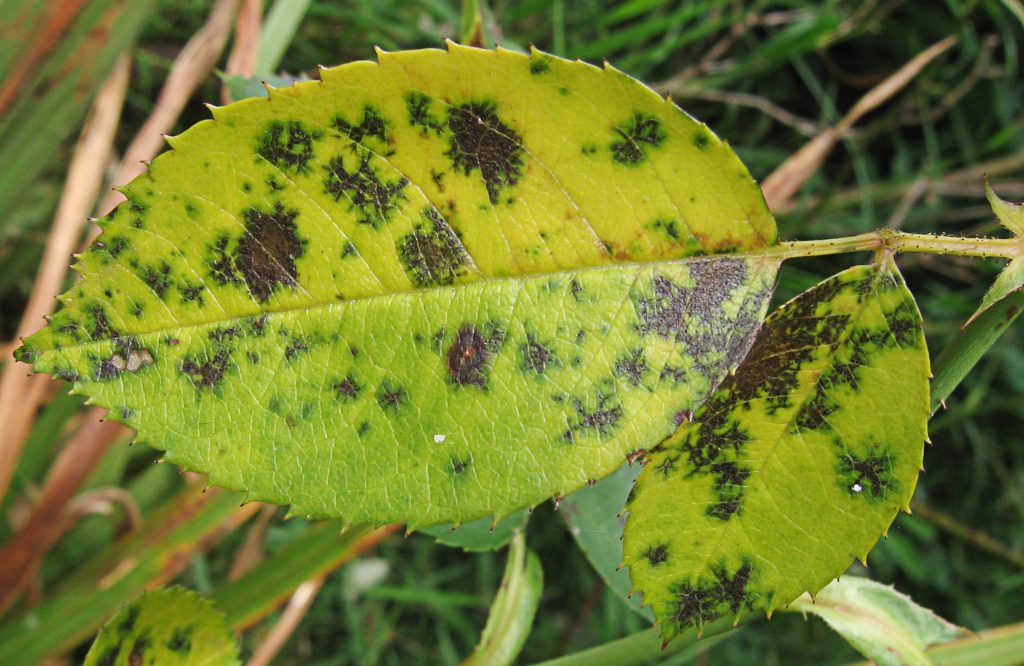
Treatment:
To fix this problem, make sure that you’re watering your basil slowly and thoroughly, but not all at once. Also, check the drainage holes at the bottom of each pot. If they’re clogged, clear them out with a wire or screwdriver and make sure that any plants you put outside have a layer of gravel beneath them so that they don’t sit in standing water when it rains.
2.Nutrients Deficiency
When basil leaves begin to yellow, this is often a symptom of a nutrient deficiency. There are several nutrients that are essential for healthy basil plants, and when any one of them is not present in sufficient amounts, the leaves will begin to yellow. These nutrients include nitrogen, phosphorus, and potassium, as well as calcium and magnesium.
Nitrogen deficiency occurs when the soil is too alkaline or acidic. To correct this problem, add compost or manure to the soil. If you notice that the entire plant is wilting and yellowing, then it is probably suffering from a potassium deficiency. In this case, you can use Epsom salts to treat the problem.
If only certain parts of the basil plant are wilting and yellowing, such as just the edges of the leaves or the tips of stems and branches, then this may be due to a magnesium deficiency.
Plants need a variety of nutrients for their growth and survival, just as humans do. Nutrients are the chemical elements required for plant growth. Plants need these nutrients to survive and thrive. If a plant is deficient in one or more nutrients, it can become diseased or die.
Nutrient deficiencies in plants can be caused by many things, including poor soil quality, lack of water or sunlight, over-fertilization, and others. The most common symptom of a nutrient deficiency is yellowing leaves (chlorosis). Other symptoms include stunted growth, wilting, leaf drop, poor fruit production, and poor root development. Deficiencies can also lead to diseases such as powdery mildew and leaf spot.
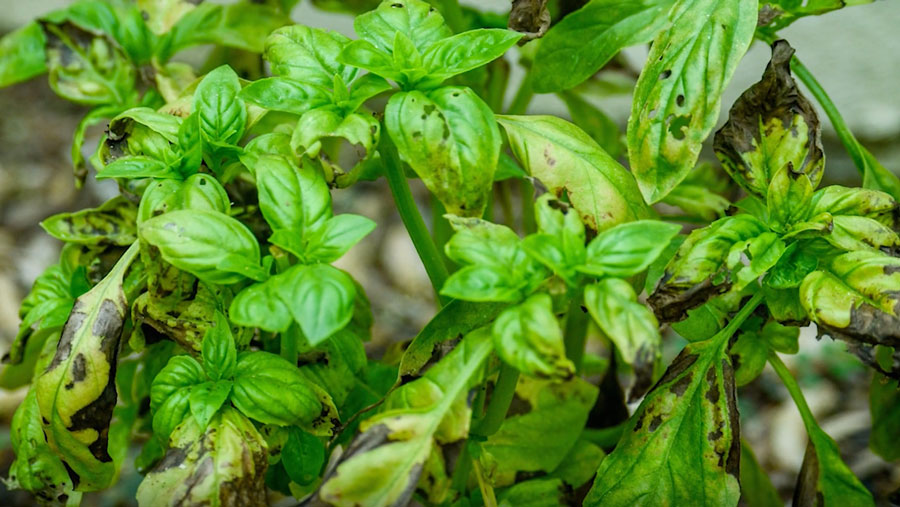
Plants need a wide range of nutrients to survive and thrive. If they don’t get enough of one or more of these nutrients, the plants will develop diseases. The following list describes the symptoms of some common nutrient deficiencies.
| Nutrients | Symptoms |
| Nitrogen | Leaves become yellow and may drop off |
| Potassium | Leaves have brown spots that may join and kill the plant |
| Phosphorus | Leaves turn blue-green |
| Iron | Leaves turn yellow and veins stay green |
| Manganese | Leaves are pale green with yellow patches between veins |
| Copper | Leaves turn yellow |
| Zinc | Stay small and leave turn yellow between veins |
Treatment: If the leaves are turning yellow between the veins but remaining green closer to them, your plant is probably lacking magnesium. Try adding an Epsom salt Treatment at a rate of one teaspoon per gallon of water, or use dolomitic lime as a magnesium source.
If the yellowing leaves are curling in addition to turning color, they are probably lacking potassium. Adding potassium-rich sources like wood ash can fix this problem. If your soil has high pH, this can also give your plant potassium issues; so if you’re using wood ash, test the pH first and make sure it’s not too high.
One of the most common problems faced by basil plant growers is yellow or brown leaves. This outcome is almost always caused by a lack of light. Sunlight is essential to the process of photosynthesis, which supplies the plant with energy. If a plant doesn’t get enough sunlight it can’t grow properly, and its leaves may start to turn yellow or brown. If you only have a few leaves that are turning yellow, it’s very likely because they are getting less sunlight than the rest of the plant. When you first transplant your basil into a pot or garden bed, new growth should appear within a week or two. If it’s been more than two weeks and you don’t see any new growth on your basil plants, sun exposure may be the issue. There are a couple of ways to correct this problem.
Treatment:
Try moving it closer to the window. Make sure it’s in an area where it will get at least six hours of sunlight each day. If possible, try to move it outside during the summer months. Not only will the plant be exposed to more sunlight (and less artificial light), but the humidity will be higher, which is another thing that makes basil plants so happy.
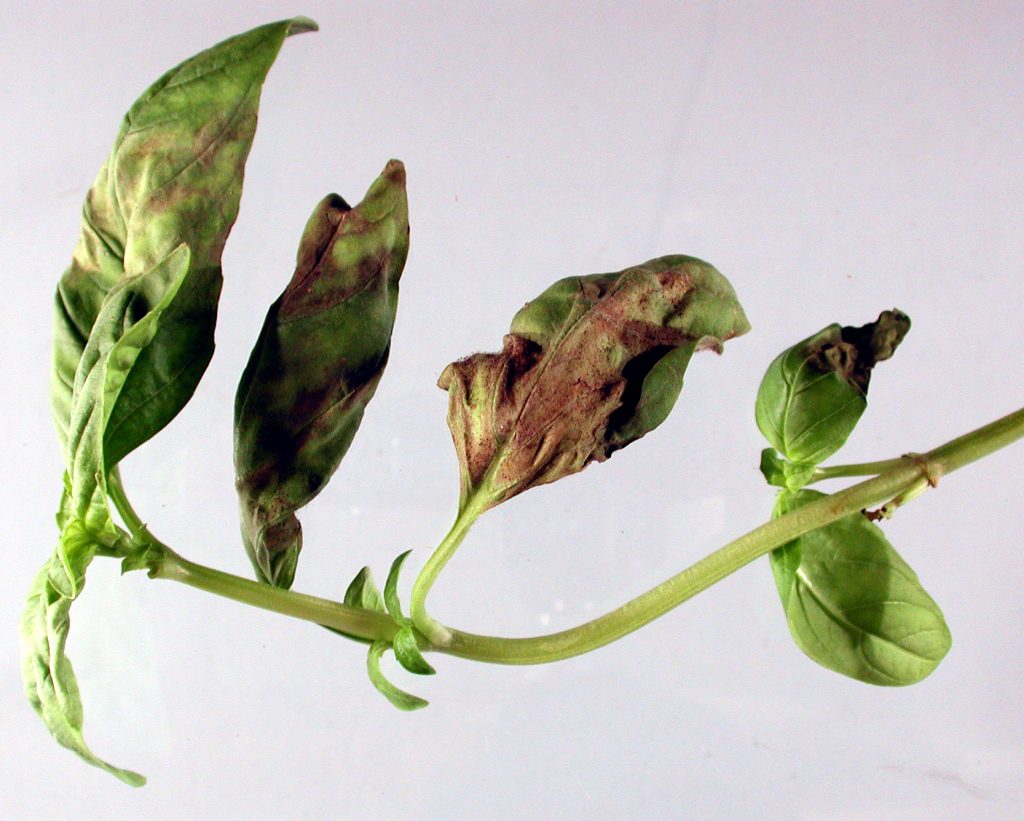
3.Pests
The pests that target basil are mostly aphids, thrips, and whiteflies. These pests feed on the sap of the basil plant, causing leaves to turn yellow and develop dark spots.
The suspect of yellowing leaves in a basil plant is most often pests. Squash bugs and aphids are known for sucking the sap out of basil leaves, causing the leaves to yellow and eventually fall off. If you suspect insects on your plant, it is important to act quickly because they can harm other plants as well.
Squash bugs are small, brown insects with flat, oval-shaped bodies. They have six legs and are approximately 1/2 inch long. As their name suggests, they feed on squash plants and spinach but may also feed on your basil if they are present. Look for them under the leaves of your plant along the stem or around the soil line. Aphids are small, pear-shaped insects that come in many colors including green, red, white, and brown. They have short antennae and measure approximately 1/8 inch long. They can be found on many different parts of the basil plant from the stems to the underside of the leaves.
Treatment:
Neutralize the pest’s fellow
Aphid and mealy insect secretions are very appealing to ants. I know, it’s delightful. The ant, ever diligent, will even transport aphids and mealybugs to a friendly plant. Aphids and mealybugs are considerably reduced when ant numbers are kept low. Apply ant-killing food to anthills and the base of affected plants to achieve this. Sprinkle cinnamon on the soil, which ants despise, for a more natural approach.
Companion Plant
Consider planting basil near plants that aphids and mealybugs dislike to deter them from taking up home on your beloved basil. Zinnias and garlic, for example, both emit a pest-repelling odor. Zinnias have enormous, vivid blooms, making them an excellent choice. Garlic is the perfect complement to basil.
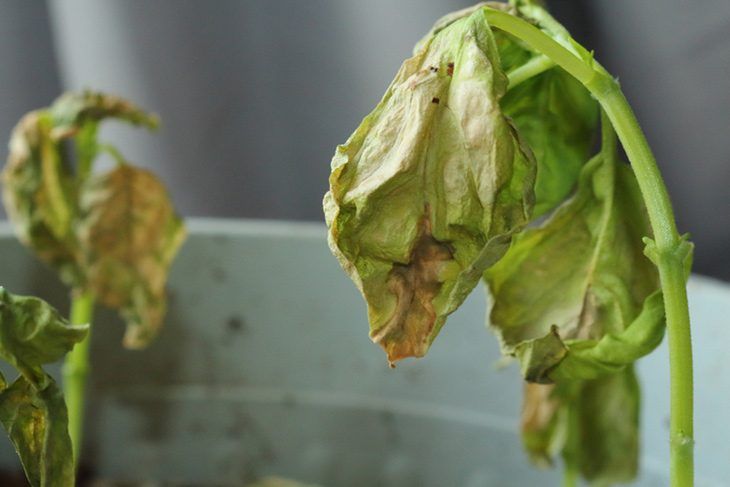
Geraniums, chrysanthemums, and mint are some other alternatives. Mint is an invasive plant that prefers damp soil. As a result, rather than planting it alongside your basil, you should plant it in a container near it.
4.Overcrowded plants
Basil plants have a natural tendency to yellow their leaves as they age, and this is healthy for the plant. The yellowing leaves indicate that the plant is growing old and that it is time for them to be pruned so that new growth can take place. However, if your basil plant yellows all of its leaves at once, then this is indicative of a different problem. Basil plants do not typically yellow their leaves until after several months of growth have already taken place. Basil plants are annuals in most climates, which means that they flower, produce seeds, and then die after one growing season has concluded.
Overcrowded basil plants do not receive enough nutrients from the soil because they are competing with other plant roots for those nutrients. When a basil plant becomes overcrowded during seedling growth or establishment stages, it will yellow all of its leaves rapidly due to nutrient deficiency issues.
Treatment:
The best Treatment for this problem is to thin out your garden to allow more space between the plants so that they do not get overcrowded. If this does not work, then the next step would be to transplant them into larger containers with better drainage and improved soil quality.
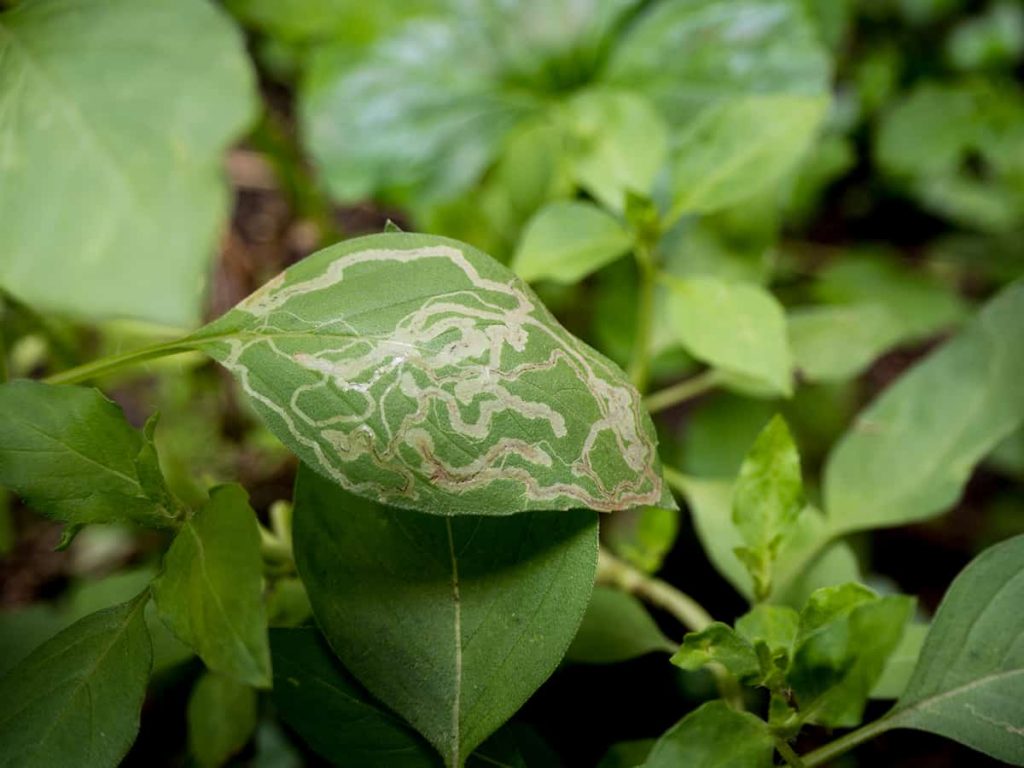
5.Plant Disease
Downy Mildew
Downy mildew is a common problem in basil plants. Downy mildew is a disease caused by the fungus-like organism Peronospora belbahrii, which can be spread by water, wind, or splashing rain. Although downy mildew is favored by cool temperatures and high moisture levels, it can occur at any time during the growing season. Downy mildew symptoms include yellowing of the leaves and white or gray mold on the undersides of the leaves. These symptoms are most severe on new growth; older parts of the plant may appear less infected. Left untreated, the basil plant will eventually die because its photosynthesis process is disrupted by the infected leaves.
Treatment:
To promote aeration, first, remove the plants from their damp environment and evenly space them. To prevent the disease from spreading, isolate the damaged plant.
Second, physically and gently remove any leaves that have been infected by the fungus. Remember that this fungus spreads by microscopic holes that float in the air or are carried by water droplets. As a result, if it gets on other leaves, it may (or may not) affect the rest of the plant, depending on the protection of the other basil stem.
Another option is to use an antifungal water Treatment spray in conjunction with manual removal. What’s the good news? They’re easy to make at home with supplies you probably already have on hand.
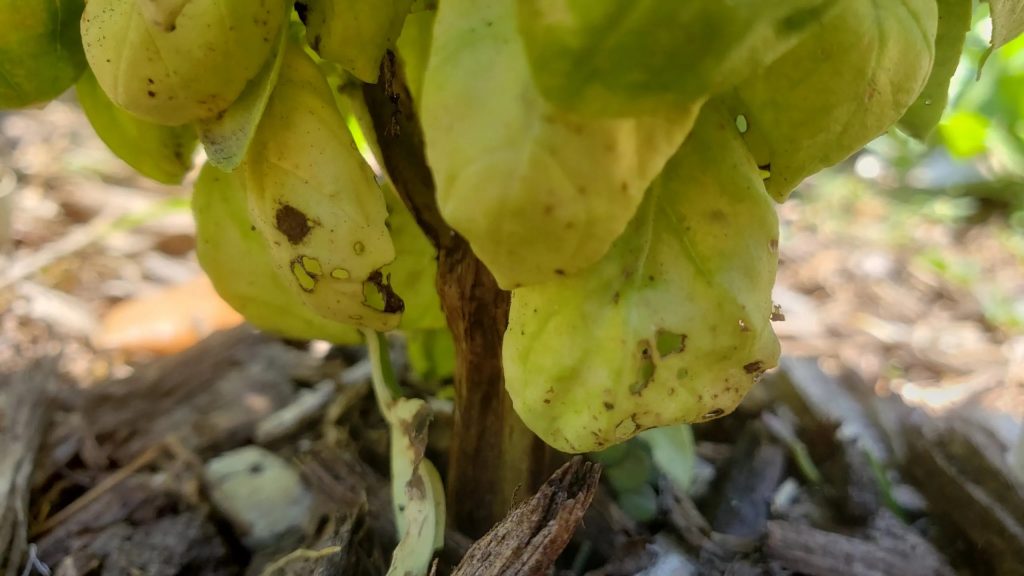
For the spray:
One tablespoon of baking soda, one tablespoon of vegetable oil, and one dish of soap in a Treatment of roughly 4 liters of water is required for the spray. Apply the Treatment to the afflicted leaves once a day until the powdery residue is gone. There are also simpler garlic and milk-based recipes. for additional information
Root Rot
Root rot is a generic term for any condition that causes the roots to decay. It is most commonly due to excess moisture in the soil, and it can easily happen if you water your plants too much. The good news about root rot is that you probably won’t lose your plant if you catch it early enough—but the bad news is that it’s not always easy to spot when the problem first starts.
If your basil plant has yellowing leaves on the surface and a soft or mushy stem near its base, it is likely suffering from root rot.
Treatment:
The best way to treat this problem (if you’ve been watering too much) is to let the soil dry out completely before giving it another drink of water. If roots are starting to show through the drainage holes, then those roots can be removed, too—but do not remove any roots that are still white, because they are still alive. At this stage of root rot, stop watering temporarily and wait until the soil dries out before continuing as normal with your watering schedule.
6.Temperature
If your windows or air vents are blowing out cold air at night and your basil is sitting next to them, that can cause yellowing. Also, if you have a heating register in the room where your basil is growing and it blows cold air at night, that can cause yellow leaves. The cold dry air is not good for basil plants, especially when they are right next to the source of the cold air. If you have a heating register blowing hot air on your basil plant, that can also be a problem because too much heat dries out the leaves of basil plants causing them to turn yellow.
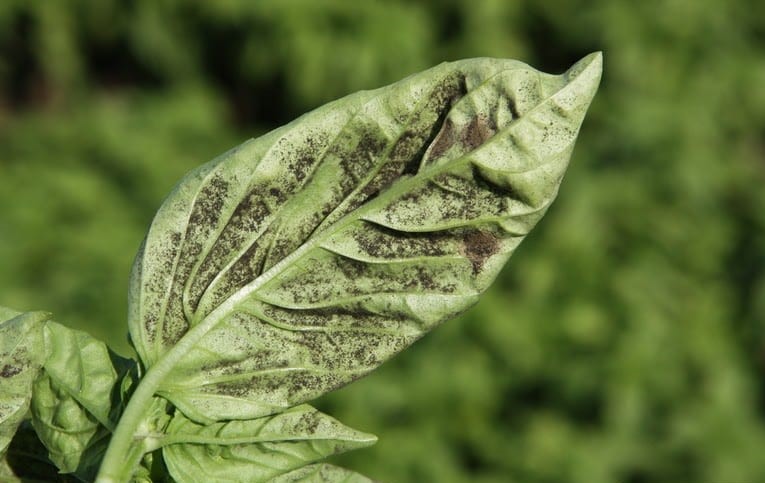
Treatment:
Basil should be kept in temperatures between 60 and 70ºF, with low humidity. You can keep the plant in lower light if you provide some form of artificial lighting for the basil, but it should still get a few hours of natural indirect sunlight each day.
7.Potting Soil Too Compact
Compacted soil causes the roots of plants to suffocate and prevents them from getting the oxygen and water they need. It also allows for standing water, which in turn promotes fungal growth. This is one of those problems that you might not notice until it’s too late—most symptoms will appear on the leaves. If you notice yellowing leaves that are falling off, or have a very slow rate of growth, it may be because your soil is too compacted.
Treatment:
A good way to prevent compaction is to use a porous material like perlite as part of your mix, or periodically add water and then drain it off. If you’ve already got this problem, though, don’t worry—it’s easily fixed. To break up the compaction, simply combine your soil with a few handfuls of compost or add some sand (or both) and mix well. If the soil is still too dense, work in a bit more compost or sand until it seems right. You can also loosen things up by adding water and allowing it to drain for a few days before using your potting soil again. But be careful not to overdo it: if the potting soil becomes too loose and crumbly, add more compost or mix in some peat moss.
Aside From Yellow Leaves, I Can Also See Black Spots on the Basil Leaves, What is It?
Black spots on the leaves of an herb plant are usually a sign that something is wrong. However, this is not always the case. In some cases, the discoloration occurs naturally and does not impact the flavor of the herb. If you’re growing basil in pots, black spots may develop as a result of overwatering or when the plant is stressed. The fungus Botrytis cinerea causes leaf spot disease which produces black or brown patches on leaves. This disease can affect many types of plants including vegetables like bell peppers, tomatoes, and lettuce.
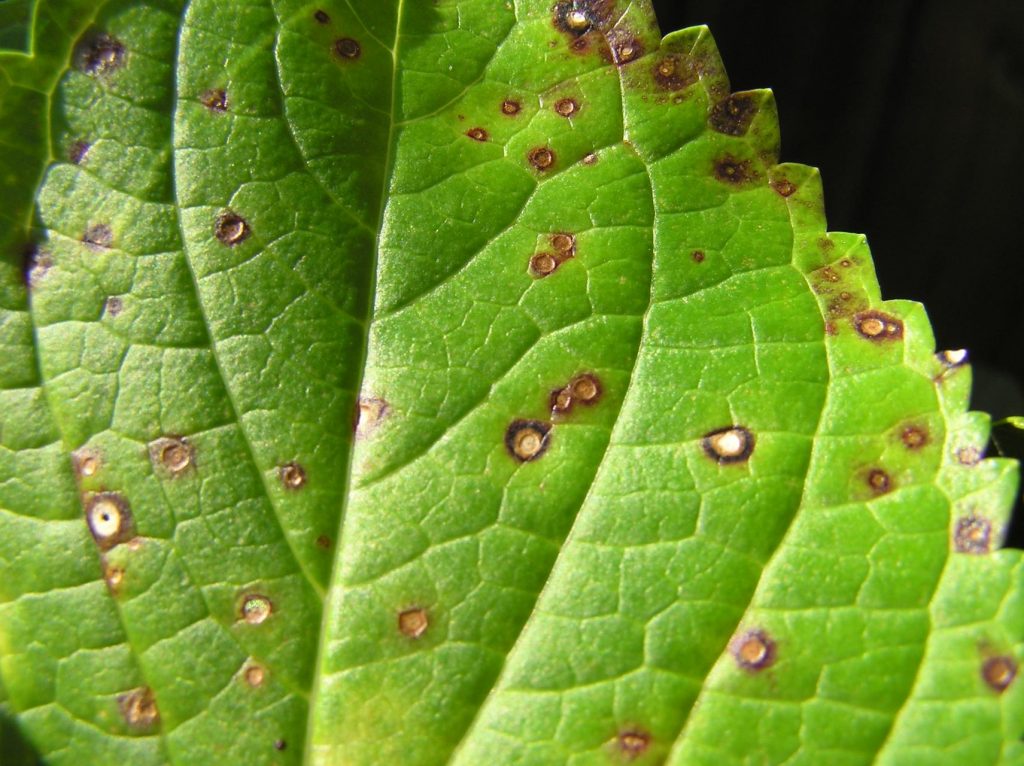
Leaves that are partially shaded by other plants can develop these spots when moisture becomes trapped on them for long periods. Spots may also be due to relatively high humidity around the plants or because of an excessive amount of nitrogen fertilizer in the soil. Fungicides are available for use against this disease, but prevention is best accomplished through proper care techniques such as using drip irrigation and spacing plants correctly so that air circulates properly between them and leaves dry quickly after watering or rain.
For preventive measures:
- Water your plant from the top using a spray to prevent bacteria from splashing onto the leaves.
- Provide proper air circulation to your plant to prevent bacterial infection.
- For a potted plant, move it indoors during the winter to avoid frost damages.
How to Treat Black Spots in Basil Leaves
If your basil has already developed black spots, you should remove any infected leaves immediately before they have a chance to infect other parts of the plant or other plants in your garden. If only a few leaves have been affected, you may be able to simply clip them off with scissors or pruners. If the entire plant seems infected, however, it’s best to pull out the plant entirely so that it won’t spread its disease throughout your garden.
If you have a dying plant, the video below will give you some tips on how to save them:

